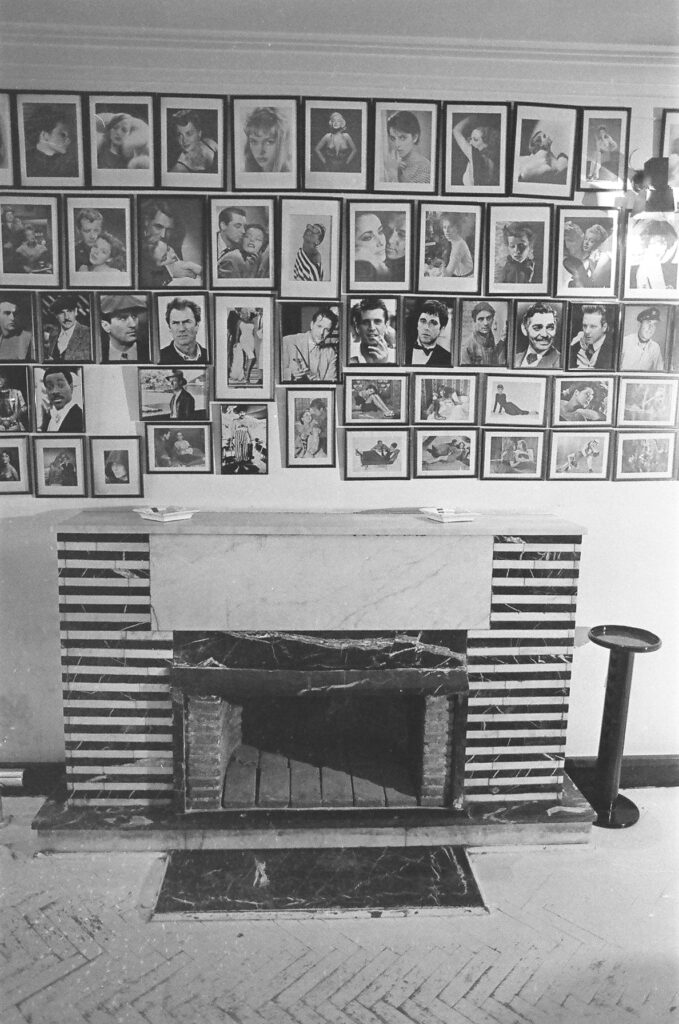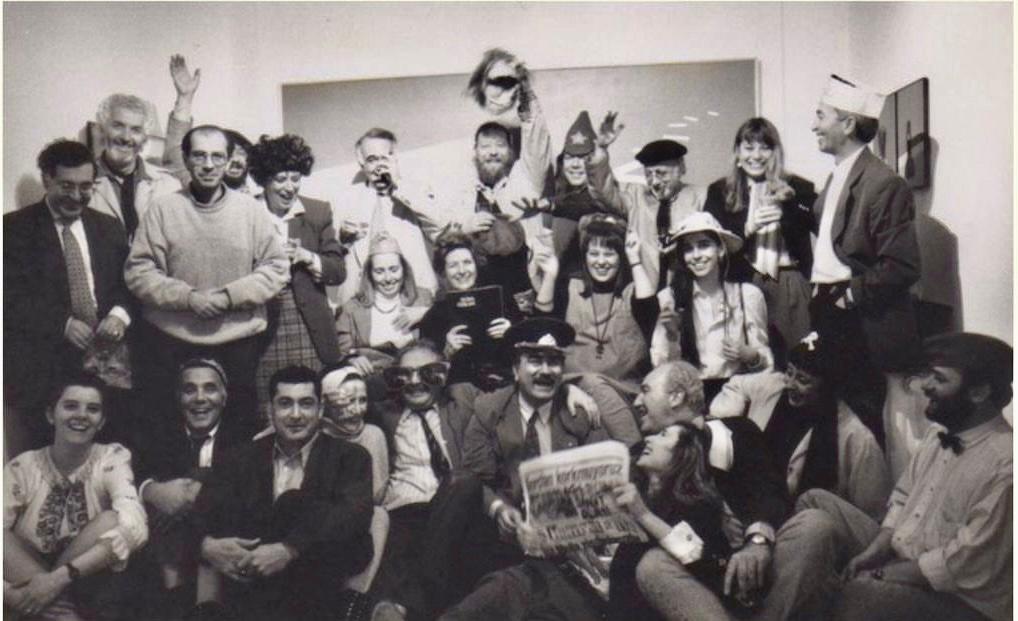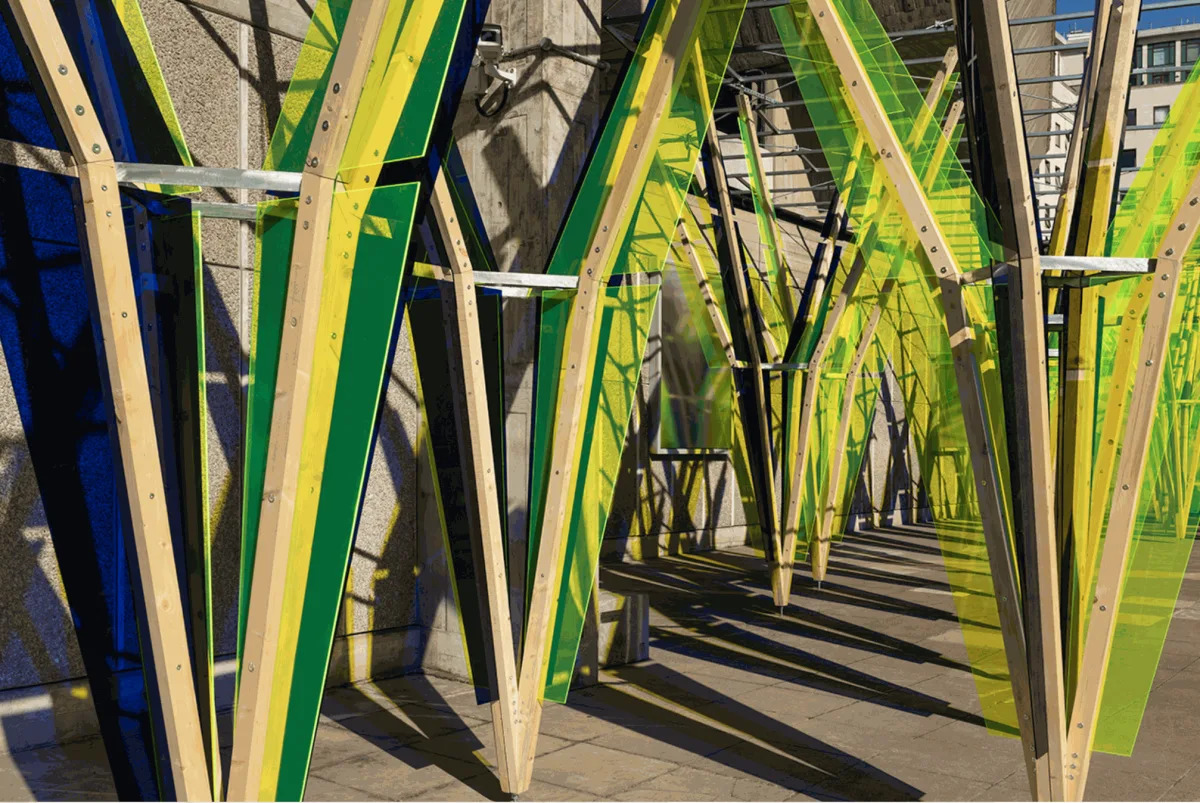We talked with Fulya Sade, the wife and companion of the late founder Faruk Sade, and their daughter Sera Sade, who now manages the gallery as a second-generation owner. Together, we delved into the history and story of Siyah Beyaz Art Gallery.
For 40 years, Black and White has been a staple in the capital. Did those years pass quickly or feel like a lifetime? To put it simply should we say ‘in the blink of an eye’?
Fulya Sade: This year marks the 100th anniversary of the Republic, while also being our gallery’s 40th anniversary. Considering how long galleries have been around in the West, forty years is really not that long. However, yes, it feels like forty years flew by in a flash.
In the West, yes… But isn’t it a complete ball game to last as an art gallery in geography like ours? You survived “against all odds’’
F.S: Against all odds! Yes this is the phrase. Forty years in a country where we really can’t make plans. We are trying to plan a two-year exhibition program when we don’t even know what is waiting for us in three months. We always say let’s stop for a while. Let’s wait. But we always carry on.
To last 40 years definitely is an act of passion…
F.S: It is not impossible. It must be the same ordeal for you too. Despite your diligent efforts to create a magazine, it’s possible that someone may discard the pages by using them to clean windows or pack items. Unfortunately, this is the reality of the country we live in.
Siyah Beyaz is based in Ankara. How did this shape the identity of the gallery? The gallery’s identity is quintessentially linked with that somehow, isn’t it?
F.S: I am originally from İzmir. They always call Ankara grey. City of civil servants,.. But let’s go back to the eighties. To the years 81- 82. Ankara has always been a place of unity and recovery. Writers, artists, thinkers and even communists have gathered in Ankara.
So can we say Ankara is the place to hide, to recover?
Sera Sade: I have always heard about it from my parents. This place became a hub for gatherings, meetings, and discussions. Even the exhibitions held here came to fruition through these meetings. People come together, meet, and talk because there is not much to do in Ankara, and the city does not restrict them.
It is like a cultural phenomenon, isn’t it?… Black and White also has a bar.
Fulya Sade: Which is our biggest sponsor.
I was born and raised in Ankara and we used to frequent this bar quite often. It makes me wonder how many generations have gathered and socialized in this place over the years. It has always been a meeting point. Nowadays, it seems like there is a trend of organizing “events” and parties as a way to promote extend art exhibitions. In some cases, it feels like the event is given priority and art becomes a mere backdrop. However, this bar and gallery have always been more than just a place to showcase art – all in all Siyah Beyaz has always been a cultural hub where people get together. From day one the gallery and the bar have been inextricably intertwined and embody this unique way of life.
F.S: It all happened spontaneously. The combination of a bar and a gallery is the vision of Faruk (Sade) Faruk was trained as an architect and his circle of friends were alumni of METU too. Not only in Ankara but we had frequent home exhibitions in Bodrum during the 2000s. Our friends from the METU Architecture Department purchased a piece of land in Yahşi, and each of us built our own houses.
S.S: A group of architects, including my father, had all built their own houses. Every August, our house and others on the peninsula would become exhibition areas, as all the furniture would be removed. These exhibitions also served as party areas, with everyone in the area coming to enjoy the festivities. It was a huge gathering, with around 250-300 people attending. There would be music, exhibitions, and lots of food and drinks for everyone to enjoy. Back then, liquor companies didn’t sponsor such nights. However, we did it just for the fun of it. My mother would cook all the food herself.
F.S: Cooking is my favorite hobby. I used to love going to the market and buying fresh vegetables to prepare delicious meals. We would set the table with the food and plates and enjoy our meals together. Nowadays, many “events” are happening in Bodrum, but I haven’t attended any of them yet.
Nowadays, we see a new trend: let’s do an “event” and include art in it
F.S: Exactly
Why is art becoming more prevalent at events? Is it to signify social status?
F.S: I agree with you completely. Unfortunately, they include art in their events. They should stick to their parties and events without involving art. As a big construction company, they have plenty of empty space, so they shouldn’t use it for art either. I believe art can legitimize and sanitise anything, but it shouldn’t be treated as a background decoration.
It is kind of tragic. Contemporary art today even serves as a background for Instagram photos.
F.S: In my opinion, the ability to discuss and criticize directly results from knowledge. Writing a critical article is a challenging task that requires extensive knowledge and understanding. Criticism is incredibly important, yet we seem to lack it in today’s society. Unfortunately, this lack of criticism is becoming increasingly dangerous. I fear we may reach a point where constructive criticism is no longer present.
What are the milestones of Siyah Beyaz Gallery?
F.S: First of all, its establishment. It was the Kenan Evren era in Turkey and Faruk (Sade) had just returned from Paris. Many graduates of METU did not choose to work for the state. Instead, they pursued their dreams. One such student was Faruk, dreamed of establishing a gallery and he did just that. Again the launch of Bilkent Universtiy has been a milestone in the cultural life of the city. A renowned institution where many notable names such as Vasıf Kortun, Erdağ Aksel, Haluk Akakçe, Michael Morris, Hüseyin Bahri Atlptekin were associated with. Bedri BaykamKaan -Ardıç Gürsel, and Sitki Kosemen were around.
You never thought of leaving?
F.S: We thought about it for a while, but instead of investing in Istanbul, we decided to invest in Ankara. We actually thought about opening up a place in Paris for a while.
So back to the name of the gallery Siyah Beyaz (Black and White)…
F.S: We used to throw parties during construction around the black fireplace. It became known as “the place with the black fireplace”. In fact, it was given its own name.

Did everything develop organically on its own?
F.S: Just like that. We loved getting together and discussing… That was our job. This place still preserved the way Faruk created it on the first day.
This place has a rich history and an interesting story behind it.
F.S: Our biggest asset is Sera (Sera Sade) Would you continue if she wasn’t there? F.S: I love my job, and I consider it as my life. It doesn’t end when I shut the door. I am not a banker and I don’t live that way. We never pressured Sera though. We told her to do whatever she wanted.
When were you born Sera?
1985.
You referred to Sera as the second generation. You said Faruk Sade was the founder, but you never mentioned yourself.
F.S.: In my opinion, Nevzat Sayın put it best. He used to say that Faruk is Faruk, while Fulya is a blend of Faruk and herself. This is the most accurate description of my life so far. I have learned everything from Faruk for forty years, and this observation sums up my Black and White existence.
Sera, how did you decide to work here?
S.S: I didn’t even know it was a decision. I didn’t notice, happened so naturally. I was born into this place.
F.S: We did not interfere but required her only to do her BA degree in Turkey. She completed her master’s in book art in London after studying Graphics at Bilkent.
So how did you start working actively here?
S.S: When I started here, my father always told me, “Do it yourself, do your own mistakes.” He let me . So sometimes I failed. But I learned. Since I am kind of a control freak the idea of making mistakes seemed strange to me at first, but mistakes have paved my way.
For how long have you been working here at Siyah Beyaz Gallery?
S.S: It’s been 12 years.
The gallery has never parted ways with the artists it has worked with for a long time, right?
F.S: Some have been here since its founding. Some are new.
You have witnessed many changes over the past forty years, including acts of terrorism. How did it affect you?
F.S: There were days when the openings were empty. There were reports that a bomb would explode here.
Have you ever been afraid?
F.S: Would we be scared of the bomb? No, bombs were exploding all around when I was at the University.
You created a book that tells the story of your 30-year history…
F.S: Yes, and we wanted everyone who was part of this story to be there. Only Rabia Çapa is missing from that book, she was unwell at that time.
There is Faruk Sade Art Fund, right?
S.S: Yes. This is something we do to support artists from different disciplines such as architecture and art history and to realize their dreams. Every year we support young talents under the age of 35. The first project we supported is the book version of the Operation Public Space installation created by Ali Şentürk in 2013. Şentürk›s research covering the years 2000-2018; It lists what happened to the sculptures in public spaces in Turkey.
You had an artist residence project in the 90s, right?
F.S: We owned a three-story building in Sultanahmet that served as an artist residency from 1990 to 2003. The project was international, with the French government at that time also participating. It was a significant undertaking, as it facilitated the exchange of artists between Turkey and foreign countries. Turkish artists had the opportunity to work abroad, while foreign artists could come to Istanbul to work on their projects.
Are you planning to host exclusive exhibitions for your 40th year this season?
S.S: Yes. Our lineup of artists are paired in duos. Both established and young are going to collaborate and produce together in duo’s.
Why is Sera’s arrival significant in terms of the gallery’s history?
F.S: There was a clumsiness on our shoulders. Sera took that away from us. Let us not go without saying that Faruk’s loss is inevitably a great mark in the history of the gallery too.
Sera you and your husband opened a pizzeria within here about two years ago.? S.S: Yes. I believe we have established our- selves quite well. The gallery was established by my father when he was 28 years old, and he passed it on to me when I turned 28. The gallery is only a year older than I am. Surprisingly, the pizza place is the same age as my son. We are continuously expanding, and while doing so, I am doing my best to preserve all that we have accomplished.
Have you never thought of giving up in 40 years?
F.S: At one point I said enough was enough. Faruk (Sade) resisted. He never gave up. He was a very stubborn one.







